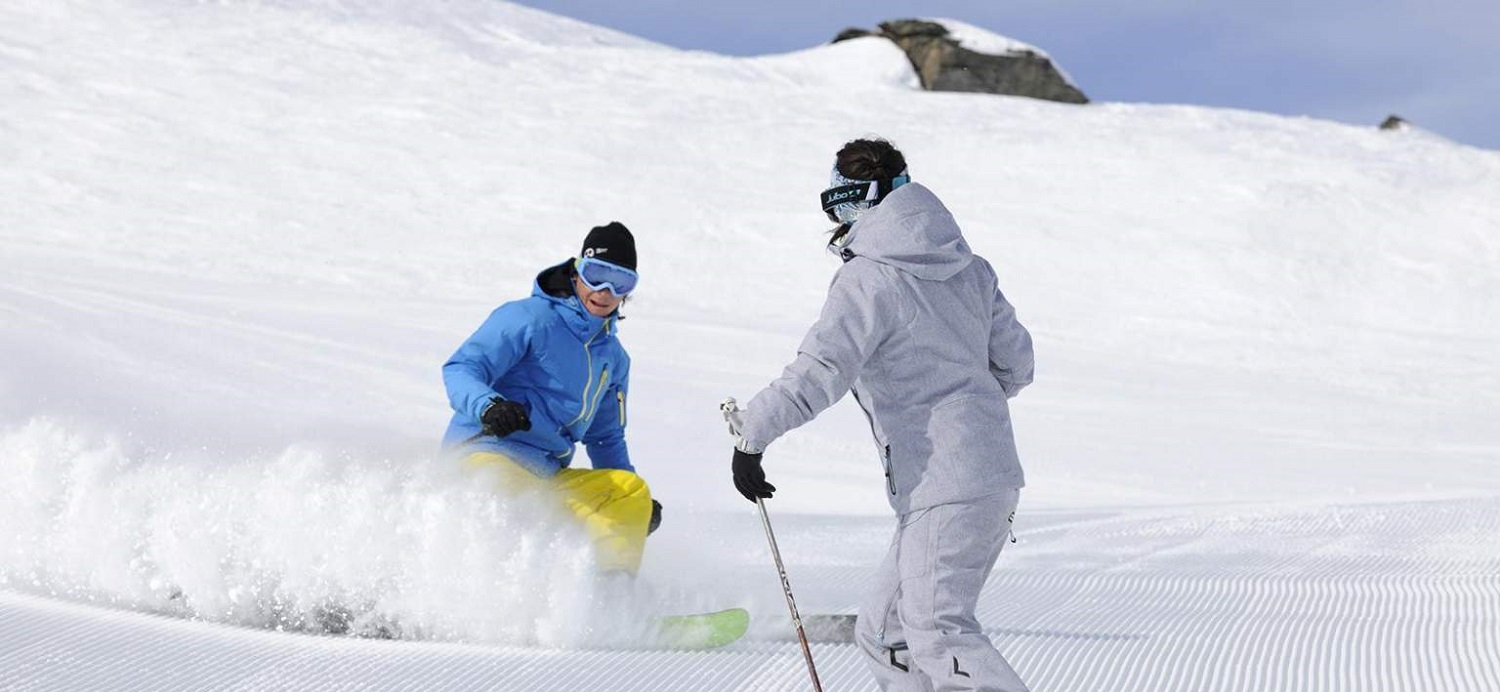Skiing for Beginners: Hockey Stops

The snow plough is a great technique for building up confidence standing on your skis - allowing you to control your speed on shallow slopes. However, on steeper slopes and at higher speeds, the snow plough is insufficient for slowing you down - especially if you are heading towards an obstacle and need to stop quickly.
In order to come to halt in a hurry, you'll have to learn the hockey stop - so-called because ice hockey players use this technique in the rink. Once you've perfected this move you can stop almost instantaneously and use it as the basis of neat short turns as you look to advance your skiing to the next level.
You can combine learning the hockey stop with learning to ski 'in parallel' using the following exercise:
Step 1: Snow plough
Find a shallow slope and adopt your snow plough position, with the tips of the skis pointing inwards, inside edges turned down, your shoulders over your knees, equal weight on both skis and the tips of your poles dragging on the snow.
Step 2: Balance and timing
As you move forward, practice putting some flex into your skiing by adding in a 'bounce' - bending your knees and planting your poles before returning to your original position. This will prepare you for the little hop you need for your hockey stop.
Step 3: Parallel skis
The next step is to get your skis in parallel. Start off in the snowplough position but, as you 'bounce' up, bring the ends of the skis together so that there is the same gap between them down the whole length of the ski and they are level on the snow - this is parallel skiing.
It's important to have a wide, clear space to try this in as you'll immediately notice an increase in speed as the friction reduces. Don't panic - gently point both skis to one side and you'll begin turning into the slope. Taking weight off the inside ski will help you turn.
Step 4: Hockey stop
Through this exercise, you'll appreciate the need to be able to stop quickly. It's now time to try the hockey stop. Instead of gently turning to one side to slow down, use that flexible bounce action you've been practising to instantaneously turn your skis and your body, in sync, at a right angle to the slope. As your skis turn into the hill, put pressure on the edges to create friction. You'll need to bend your knees and get your weight back to help you stay upright.
A satisfying puff of powder will indicate you've stopped quickly and used your edges properly. If you're finding you're not coming to a complete stop, you're probably not committing enough to the turn - really focus on moving everything in one swift motion.
You'll likely find you naturally turn in one direction every time, but make sure you practice on the other side too. You'll need this ability for learning tight parallel turns later.
To find out more about a Ski Weekends holiday for this season, call one of our ski experts on 023 8020 6971 or email sales@skiweekends.com
